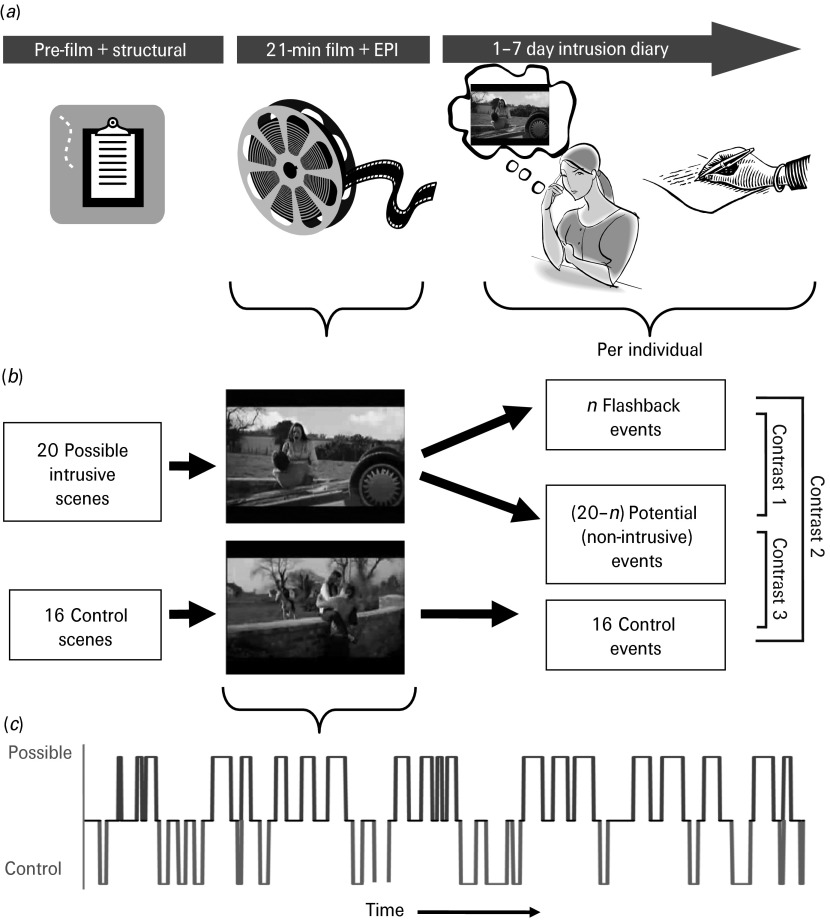Fig. 1.
Study design. (a) The three stages of the study: pre-film; film viewing (peri-traumatic encoding) and echo planar imaging (EPI); and the 1-week diary (flashback recording). (b) Modelling of the three functional magnetic resonance imaging (fMRI) event types. For each participant, an idiosyncratic subset ‘n’ of the 20 possible intrusive scenes was experienced as analogue flashbacks in the diary and become flashback events. This establishes ‘20 – n’, the remainder of the possible scenes that did not flash back as potential events. None of the 16 control scenes flashed back for any individual. Thus, for each participant three event types were modelled: (1) flashback intrusive events; (2) potential events; and (3) control events. (c) fMRI task schematic: Frequency, timing and duration of the 20 possible intrusive scenes (which later become either flashback or potential events) and the 16 control scenes within the film timeline.

